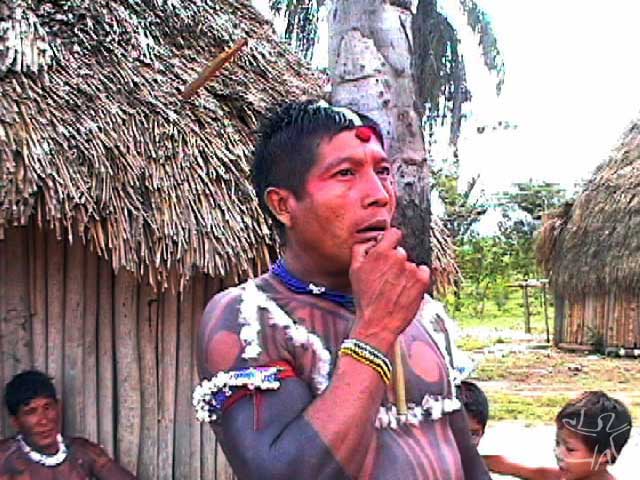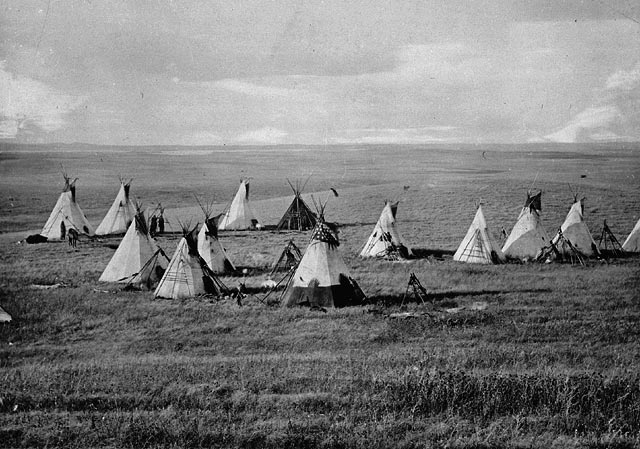2016 Livro RCA DPLf Direito a Consulta digital
- Country
- Brasil
2014 12 14 munduruku consultation protocol
- Country
- Brasil
2014 protocolo consulta consentimento wajapi
- Country
- Brasil
Wayãpi
- Population (estimate, min)
- 1600
- Country
- Brasil
- French Guyana
- Image

- Description
The Wayampi or Wayãpi are an indigenous people located in the south-eastern border area of French Guiana at the confluence of Camopi and Oyapock rivers, and the basins of the Amapari and Carapanatuba Rivers in the central part of the states of Amapá and Pará in Brazil. The Wayampi number approximated 1,615 individuals scattered in eleven villages. Approximately 710 live in French Guiana in three villages, and 905 live in eight villages in Brazil.Wikipedia
Munduruku
- Population (estimate, min)
- 13000
- Country
- Brasil
- Image

- Description
The Munduruku, also known as Mundurucu or Wuy Jugu, are an indigenous people of Brazil living in the Amazon River basin. Some Mundurucu communities are part of the Coatá-Laranjal Indigenous Land. They had an estimated population in 2014 of 13,755 Wikipedia
Krenak
- Population (estimate, min)
- 600
- Country
- Brasil
- Image

- Description
The Aimoré (Aymore, Aimboré) are one of several South American peoples of eastern Brazil called Botocudo in Portuguese (from botoque, a plug), in allusion to the wooden disks or tembetás worn in their lips and ears. Some called themselves Nac-nanuk or Nac-poruk, meaning "sons of the soil". The last Aimoré group to retain their language are the Krenak. Wikipedia
Juruna (Yudjá)
- Population (estimate, min)
- 340
- Country
- Brasil
- Image

- Description
The Yudjá are an Indigenous people of Brazil, who live in the states of Mato Grosso and Pará. They live in two villages in the Xingu Indigenous Park, located near the mouth of the Maritsauá-Mitau River. They fish and raise crops, such as manioc. Wikipedia
2016 protocolo tix xingu
- Country
- Brasil
Protocolo Consulta KRENAK
- Country
- Brasil
Protocolo de Consulta comunidades ribeirinhas Pimental e Sao Francisco
- Country
- Brasil
PROTOCOLO CONSULTA Quilombola
Protocolo de Consulta Munduruku
- Country
- Brasil
PROTOCOLO MONTANHA E MANGABAL
RCA 2017 Protocolo Juruna CAPA e MIOLO
- Country
- Brasil
Amerindian Peoples Assiciation
- Logo

- Country
- Argentina
- Bolivia
- Brasil
- Chile
- Colombia
- Equador
- French Guyana
- Guyana
- Peru
- Surinam
- Description
The Amerindian Peoples Association (APA) is a non-governmental Indigenous Peoples organization in Guyana.
Membership of the APA is made up of Units throughout the country, currently amounting to close to eighty such units. The Association is led by an Executive Committee comprising the President, Vice-President, Secretary, Treasurer, Assistant Secretary/Treasurer, eleven regional representatives, a women’s representative and a youth representative.
The APA has a central office in Georgetown which is staffed by persons from interior communities who carry out the daily functions of the organization and who provides the link between what is happening in the communities and what is happening at the national and international levels.
Government consultation protocolo tipnis
- Country
- Bolivia
Sámi
- Population (estimate, min)
- 9000
- Country
- Finland
- Norway
- Russia
- Sweden
- Image

- Description
The Sámi people (also spelled Saami) are a Finno-Ugric people inhabiting Sápmi, which today encompasses large parts of Norway and Sweden, northern parts of Finland, and the Murmansk Oblast of Russia. The Sámi have historically been known in English as Lapps or Laplanders, a term which has a derogatory implication in the Nordic countries.[8][obsolete source] Sámi ancestral lands are not well-defined. Their traditional languages are the Sámi languages and are classified as a branch of the Uralic language family. Wikipedia article
BCP Toolkit Complete
Samburu
- Population (estimate, min)
- 160000
- Country
- Kenya
- Image

- Description
The Samburu are a Nilotic people of north-central Kenya. They are a sub tribe of the Maasai. The Samburu are semi-nomadic pastoralists who herd mainly cattle but also keep sheep, goats and camels. The name they use for themselves is Lokop or Loikop, a term which may have a variety of meanings which Samburu themselves do not agree on. Many assert that it refers to them as "owners of the land" ("lo" refers to ownership, "nkop" is land) though others present a very different interpretation of the term. The Samburu speak the Samburu dialect of the Maa language, which is a Nilo-Saharan language. There are many game parks in the area, one of the most well known is Samburu National Reserve.The Samburu is the third largest in the Maa community of Kenya and Tanzania,after the Kisonko(Isikirari)of Tanzania and Purko of Kenya and Tanzania. Wikipedia
Cherangany
- Country
- Kenya
- Description
The Sengwer people (also known as Cherang'any and previously as Sekker, Siger, Sigerai and Segelai) are an indigenous community who primarily live in the Embobut forest in the western highlands of Kenya and in scattered pockets across Trans Nzoia, West Pokot and Elgeyo-Marakwet counties. The Sengwer are sometimes portrayed as a component of the Marakwet people but are a distinct ethnic grouping. Wikipedia article
Cherangany Kenya FPIC Process
- Country
- Kenya
Kenya Samburu Community Protocol
- Source
- http://community-protocols.org/wp-content/uploads/documents/Kenya-Samburu_Community_Protocol.pdf
- Country
- Kenya
African bcp initiative inception meeting report
- Country
- Kenya
- Mocambique
- Namibia
- South Africa
- Tanzania
- Zambia
- Zimbabwe
Due Process Of Law Foundation
- Country
- USA
- Description
DPLF is a regional organization comprised of professionals with a variety of nationalities, that promotes the Rule of Law in Latin America through the use of analysis and recommendations, cooperation with private and public organizations and institutions, exchanges of experiences, and advocacy efforts.
History DPLF was founded in 1996 by Professor Thomas Buergenthal and his colleagues from the United Nations Truth Commission for El Salvador. They were convinced that human rights could only be guaranteed by strong and independent national judicial systems, and so they created an organization dedicated to the promotion of the rule of law and human rights in the Americas- DPLF.
Mission DPLF is a 501(c)(3) nonprofit, nongovernmental organization based in Washington, D.C., that works to strengthen the rule of law and promote respect for human rights in Latin America through applied research, advocacy activities, strategic alliances with local actors, and effective communication of our messages throughout the region.
- website (old)
- http://www.dplf.org/
Gwich'in
- Population (estimate, min)
- 4000
- Country
- Canada
- USA
- Image

- Description
The Gwich’in (or Kutchin) are an Athabaskan-speaking First Nations people of Canada and an Alaska Native people. They live in the northwestern part of North America, mostly above the Arctic Circle. Wikipedia
Alaska Federation of Natives Guidelines for Research
- Country
- USA
Assembly of Alaskan Educators Guidelines for Respecting Cultural Knowledge
- Country
- USA
Cree
- Population (estimate, min)
- 390000
- Country
- Canada
- USA
- Image

- Description
The Cree (Cree: Néhinaw, Néhiyaw, etc; French: Cri) are one of the largest groups of First Nations in North America.
In Canada, over 350 000 people are Cree or have Cree ancestry.. The major proportion of Cree in Canada live north and west of Lake Superior, in Ontario, Manitoba, Saskatchewan, Alberta and the Northwest Territories. About 27 000 live in Quebec.
In the United States, Cree people historically lived from Lake Superior westward. Today, they live mostly in Montana, where they share the Rocky Boy Indian Reservation with Ojibwe (Chippewa) people.
The documented westward migration over time has been strongly associated with their roles as traders and hunters in the North American fur trade.Wikipedia
Federation of Sovereign Indigenous Nations
- Country
- Canada
- Greenland
- Mexico
- USA
- Description
The Federation of Sovereign Indigenous Nations (FSIN), formerly known as the Federation of Saskatchewan Indian Nations, is a Saskatchewan-based First Nations organization. The FSIN represents 74 First Nations in Saskatchewan. The Federation is committed to honouring the spirit and intent of the Treaties, as well as the promotion, protection and implementation of the Treaty promises that were made more than a century ago read more
- Website
- http://www.fsin.com/
Negotiating Research Relationships with Iniut Communities
- Country
- USA